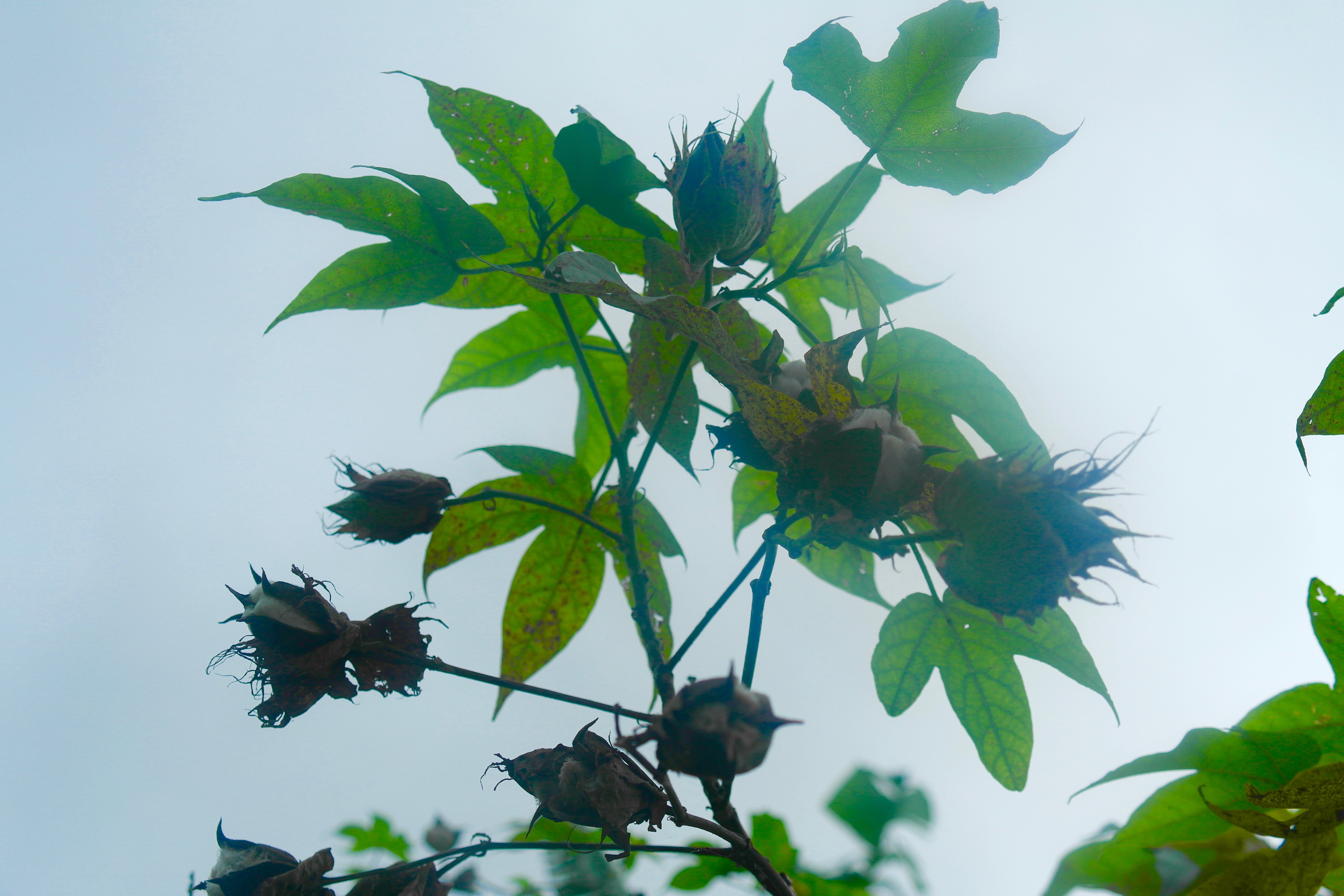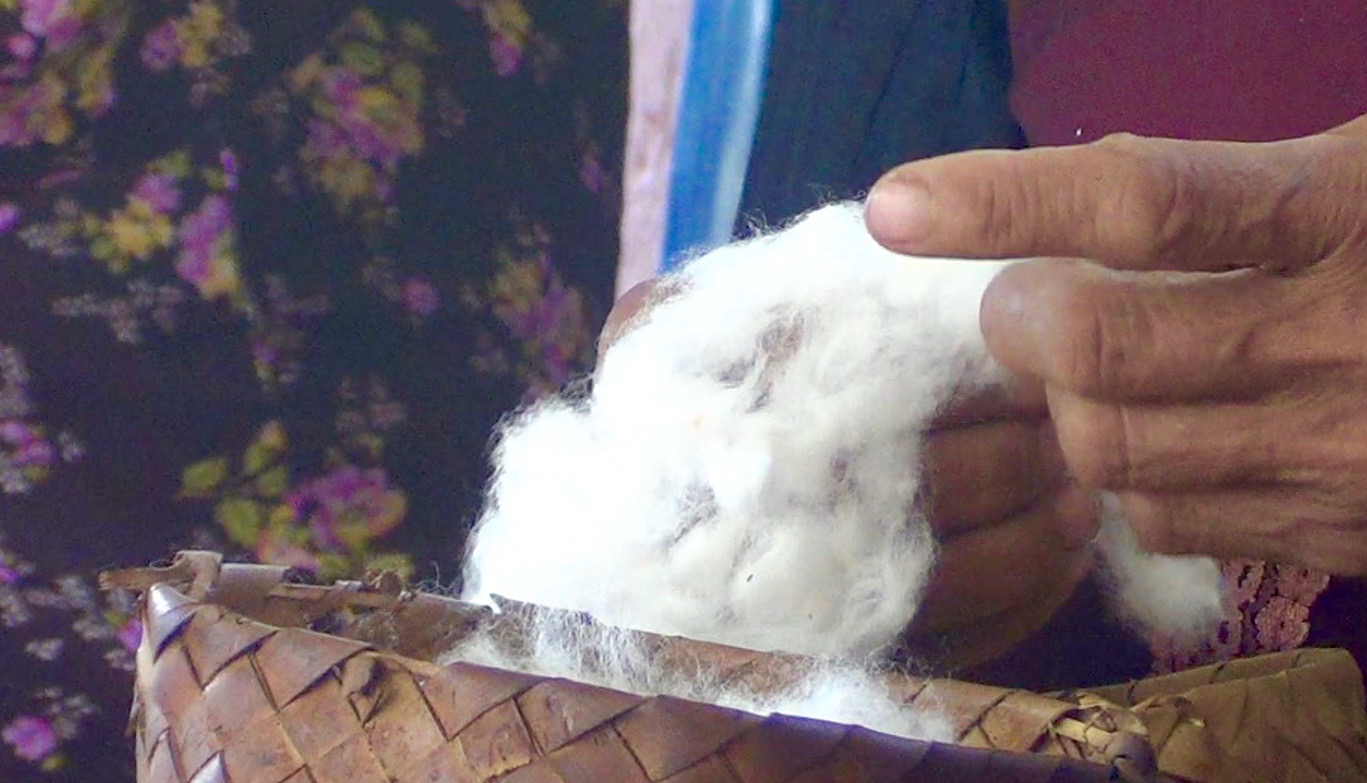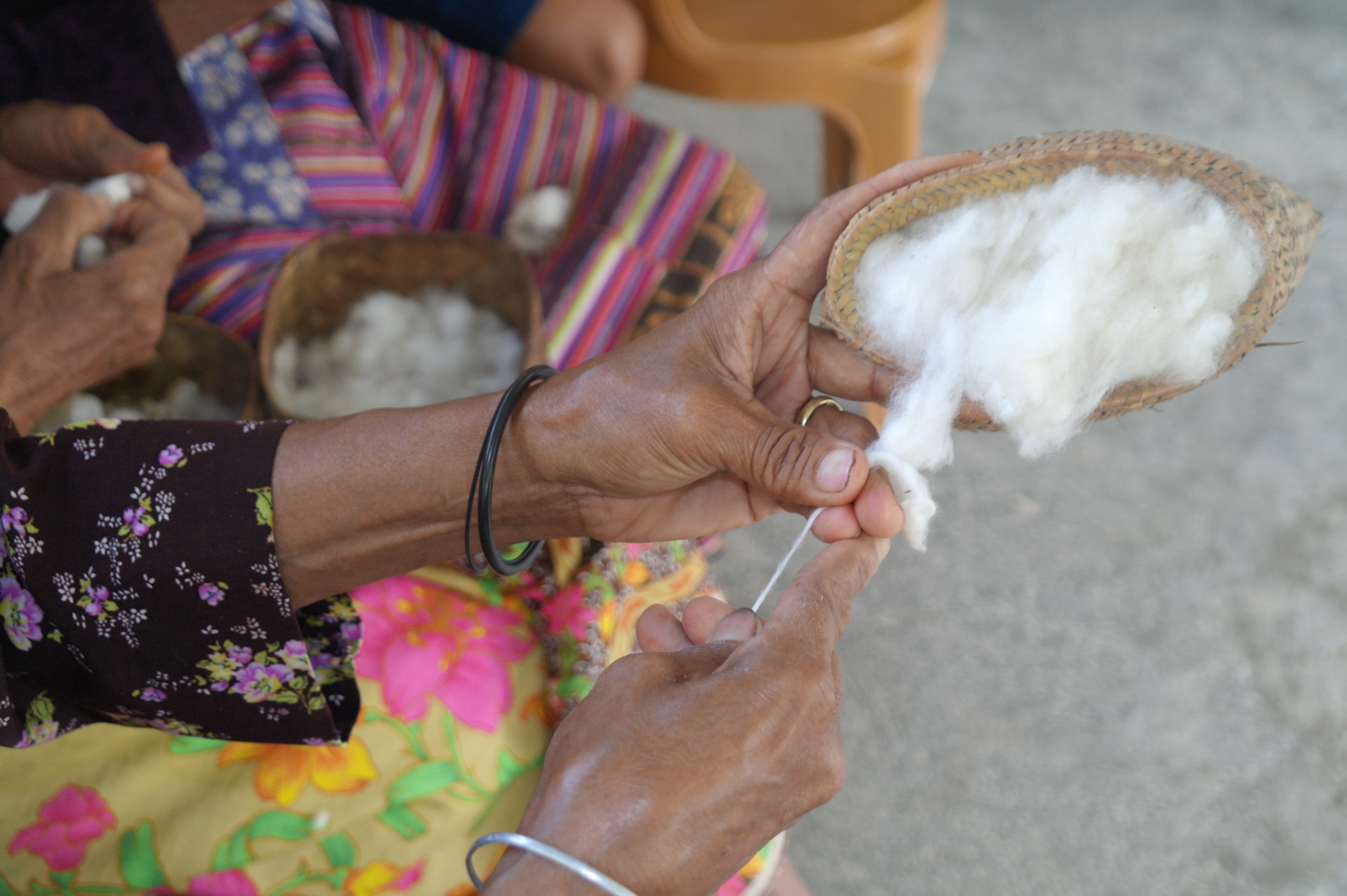Cotton spinning (anukai)
Cotton (kabas) grows wildly and is also cultivated in gardens across the district of Lautem. Cotton is woven into colourful cloth, called tais, in at least four areas in Lautem; in Leuro, Lospalo, Caulutur, Fuiloro II and Malahara, Muapitine, and also in Cacavei.

Photo: A cotton tree in Lautem
Women spin cotton at any opportunity, while singing at ceremonies (such as lipal fa'i; weddings) or even while walking. The process of making cotton into thread involves a number of stages. Cotton fibers are first separated from the seedpods they grow in. Then, to make the fibers usable, the seeds and fibers are separated, a process known as ginning. Cotton is rolled flat using a stick, making it easier to pick out seeds. A tool that resembles a small bow is used to assist in the fiber removal; the cotton is wrapped around the taught twine and plucked, evening out the cotton fibers to remove any seeds left.

Photo: Cleaning cotton
Can't find what you're looking for? Try viewing the site map.
